
The Leaning Tower of Pisa seems like an obvious topic for a travel and culture blog about Italy, but if I’m being honest I have to admit that it had never been on my “Must Do” list. I didn’t understand why so many people went out of their way just to see it (Pisa doesn’t have much else that would draw a tourist). I mean, it’s a ill-constructed tower. It leans. If it was built today it would just be demolished and rebuilt properly. What’s the big deal?
When some friends from the States asked me to meet them in Lucca for a long weekend, though, I decided I couldn’t really avoid it any longer. Pisa is just a short, 30-minute train ride from Lucca and I was going to have an entire afternoon to myself before they got there; why not go and check out what all the hype is about? At least then I could write a scathing article about how touristy and ridiculous it is. So I went.
First tip: If you’re taking a Regional train, get off at San Rossore, not Pisa Centrale. I had heard that the Tower was right by the train station but found myself walking all the way through the city, over a bridge, and to the other end of the city before finding it. Now, supposedly Pisa Centrale is 1.5 km away from Piazza dei Miracoli, the “Square of Miracles”, where the Tower and other religious buildings are located, but it felt a lot longer. It was, though, much more of an interesting walk than the walk to San Rossore on my way back to Lucca. Half a dozen to one, six to the other…
Before leaving Milan I had booked a time to climb the Tower and I’d definitely recommend doing so, particularly if you’re going in the summer months. In May, there were still a few spots open when I went into the tourist office, but for much later in the day (and who wants to spend the day just hanging around, waiting?). They only allow small groups inside the Tower at a time and only for a short period of time – they actually come up to the top and ask everyone to leave after that time is up. In TWO languages.
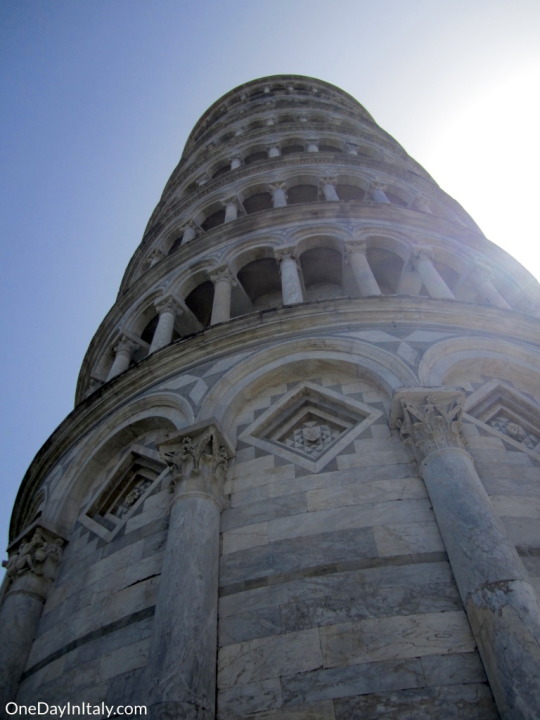
Before lining up for your tour, you have to go to the ticket office and store all bags and loose items. You’re only allowed to bring a camera or phone with you to take pictures. The lockers are free and there’s an attendant there to help you retrieve things, if needed. After storing my things, I headed for the tower…
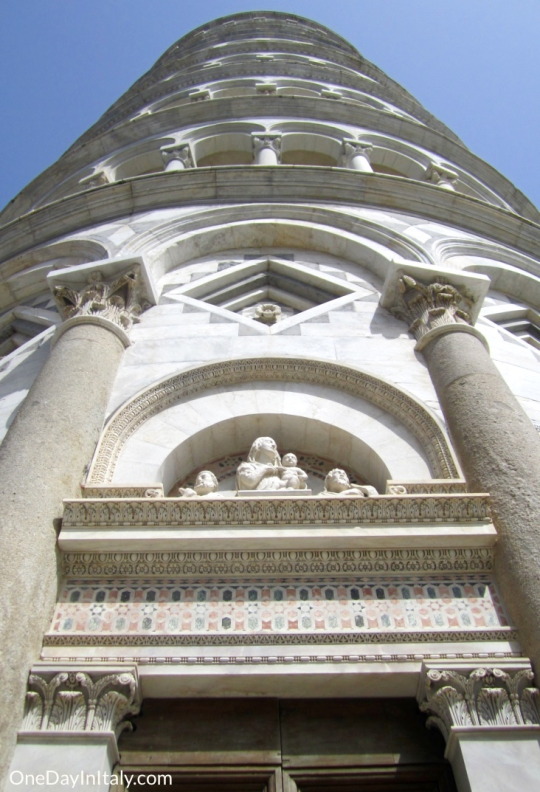
…and entered through this door:
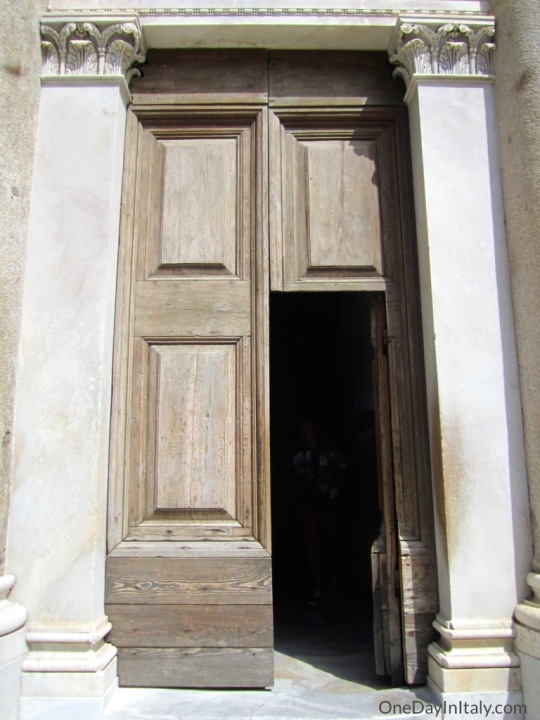
A guide gives you a short intro before you go in (which I had, unfortunately missed – no one had given me the tip of storing my bags, so I had to run back to the ticket office to do so) and there’s also a fact sheet posted to the wall that tells you the Tower’s stats:
58.6 meters high from the bottom of the foundation
55 meters above ground
Weight (in case this is important to you?): 14,453 tons
Center of gravity: 22.6 meters above the foundation plane
After adjustments were recently made to the foundation, the slope was reduced by 5.5 degrees to 5 degrees and the overhang was reduced by about 46 cm.
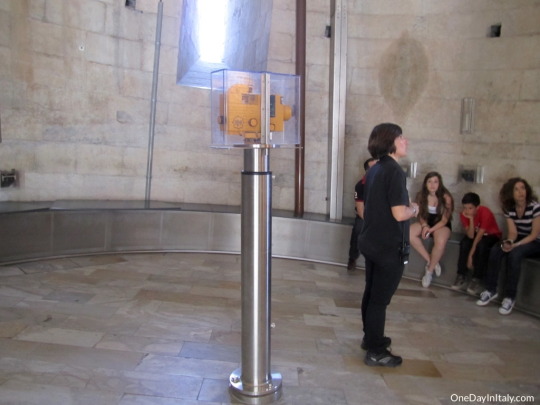
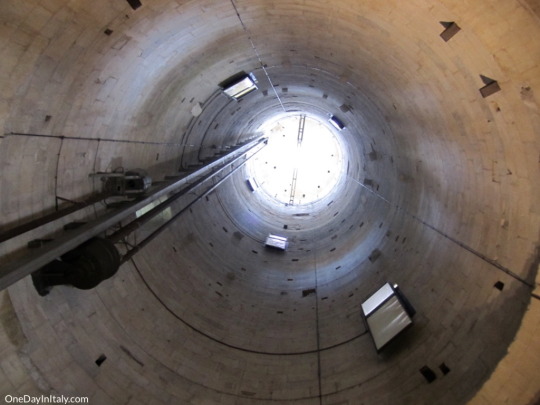
OK, but what is it? I, honestly, didn’t even know why the Tower was built. Turns out, it was just the bell tower for the nearby Cathedral. The architect who designed it (whose name is lost… perhaps fortuitous for the architect’s reputation?) meant it to draw tourists to the town and its Cathedral. He couldn’t have imagined how much it would do so…
Building began on August 9, 1173. The foundation was laid 3 feet deep which, according to the mysterious architect’s calculations, should have been more than stable enough to support the weight of the Tower. What he didn’t figure in, however, was the clay that was an natural part of the soil. The presence of clay made the ground unstable and, when the third floor was completed in 1178, a slight lean could already be seen as the weight of the Tower shifted the clay underneath it.
Construction paused for almost 100 years as the citizens were distracted by various wars. Then, in 1272, Giovanni di Simone added four more flours to the Tower and had the genius idea to compensate for the lean by adding more inches in height to the side that was leaning, hoping to make it even at the top. The extra weight from those inches, of course, made the Tower lean even more! The bell chamber at the top was finally added in 1372 and the Tower was left alone, still leaning, until the 19th century.
In 1838, Alessandro Della Gherardesca, an established architect, built a pathway near the bottom to show off the intricately crafted base, thus decreasing the already low-support offered by the ground below and causing the Tower to begin leaning more!
There have been many ideas and attempts to correct the leaning of the Tower over the centuries (though Pisa didn’t want to correct the lean too much; just enough so it was safe for tourists to climb). It wasn’t until 1990, though, when the Tower was closed for safety reasons, that John Burland, a professor of soil mechanics, came up with the plan to remove soil from the north (opposite) side of the Tower, thus evening out the base and reducing the lean. After having the work completed, the Tower was reopened to the public in 2001.
OK, so, history lesson over, the only way to go is up! I had an excited tingle in my stomach that I hadn’t expected to feel…
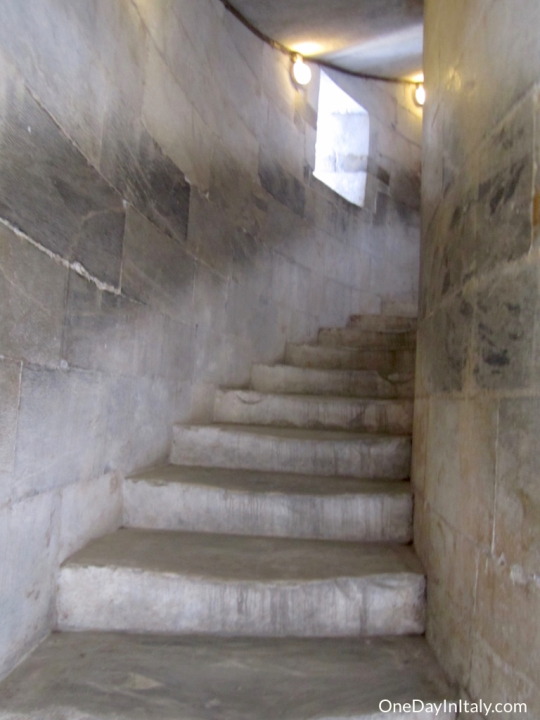
The bell chamber at the top is a continuation of the outer wall with arches built into it to feature the bells, both large and small, all the way around the edge.
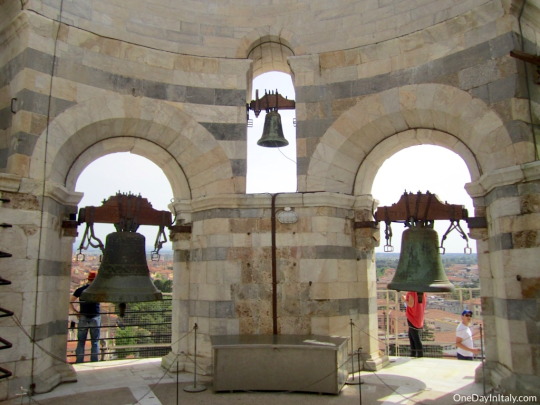
Up top, the flag of Pisa flies high (you have no idea how many pictures I had to take to get one of the flag where you can actually see the flag).
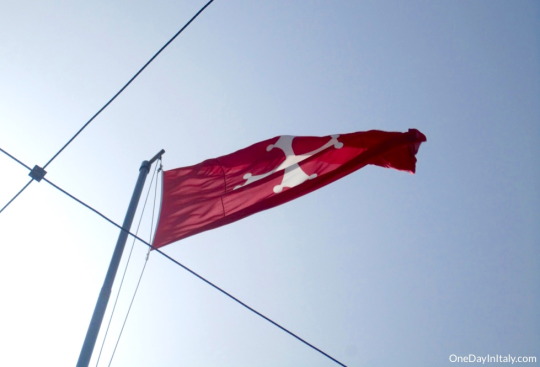
The views of the surrounding territory were beautiful. Here’s the back of the basilica and the circular baptistry in front of it.
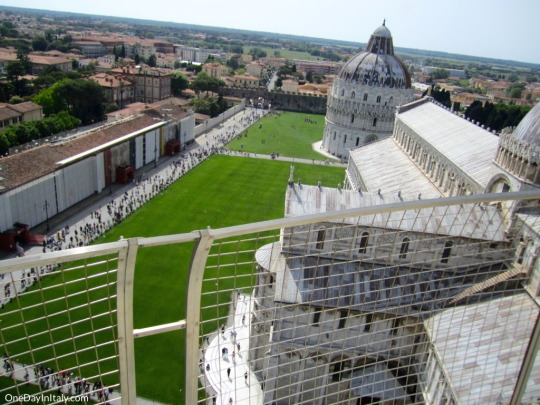
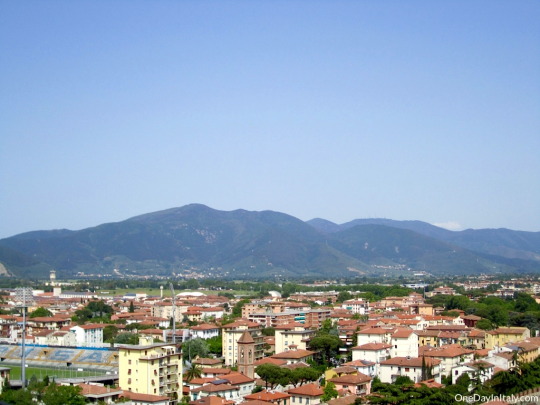
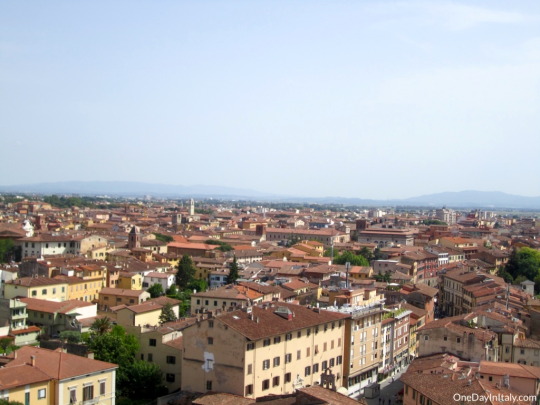
And, look! There’s the little café where I overpaid for a simple panino!
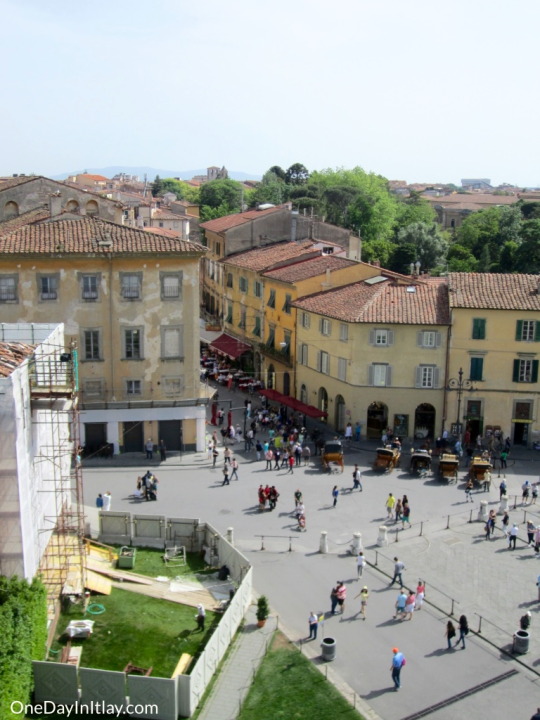
Or, perhaps I didn’t overpay… given the view…
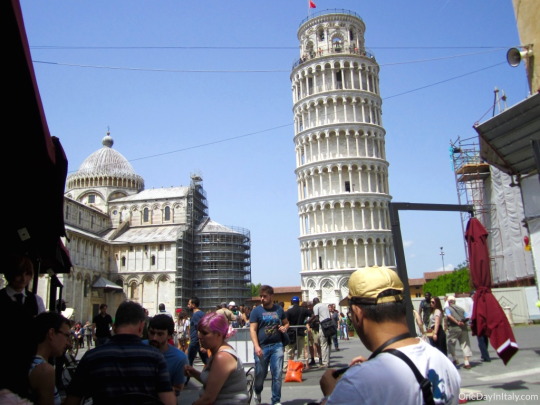
I’m really, really glad to have climbed the Tower of Pisa. It may be the most touristy thing you can do in Italy (at least the Colosseum has some significant historical meaning), but it was also quite incredible to have an experience with one of Italy’s most iconic buildings – cheesy or not.
Afterwards, I was so happy that I decided to buy tickets to the other three buildings in the Piazza dei Miracoli: the Cathedral, the Baptistry and the Camposanto Monumentale (Monumental Cemetery). I wasn’t expecting much – I mean, the Tower is the most famous thing in Pisa for a reason, right?
WRONG! The Cathedral was one of the most beautiful churches I have ever been in! But that’s another post…

Comments
comments











Leave a Reply